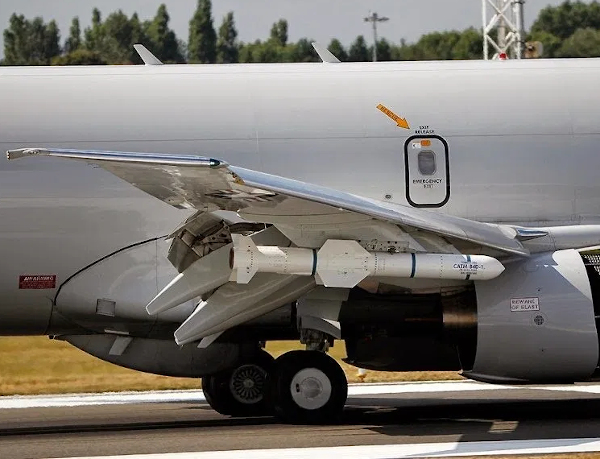The Trump administration has recently put its stamp of approval on the sale of ten AGM-84L Harpoon Block II air-launched missiles, including the complete maintenance support package and training to integrate them with P-8I aircraft. With the integration of these air launched anti-ship missiles, the P-8I shall be able to engage and destroy hostile surface warships of choice, even while they form a part of a Task Force unit.
“The AGM-84L is a solid propellant well tested sea-skimming missile with a range of 67 nautical miles and shall enable the Indian Navy to undertake Airborne maritime surface target engagement tactics more effectively. A missile with the destructive power of AGM-84L Harpoon capability fitted on an advance aircraft like P-8I shall surely improve India’s response to any hostile presence lurking within India’s maritime area of interest,” Milind Kulshreshtha, C4I expert says.
The delivery of the follow-on order for four additional aircraft which was placed in 2016 was to commence in July.
Though, not yet formally confirmed by Boeing officials, with the US also locked down, the delivery schedule could be pushed back a little.
Role of P-8I Maritime Patrol Aircrafts
The P-8I aircraft have been acknowledged as an advanced airborne platform by Indian Navy, and a force multiplier with its in-built inter-operability capabilities.
“This makes P-8I a multi-mission aircraft with C4I ingrained within its Concept of Operations, a dedicated tactical data link fully supporting it in the inter-operability features. In 2018, the two countries had signed the Communications, Compatibility and Security Agreement (COMCASA) which enabled interoperability between the US and Indian defence forces, including the P-8I and US, operated P-8A fleets. This means, now the two P-8 variants can share the Common Operation Picture (COP) in real-time to plan and execute missions as per this tactical picture to improve the resource effectiveness,” the C4I expert explains.
The primary designed role of the P-8I aircraft is to provide airborne Anti-submarine Warfare (ASW) capability to Indian Navy, to detect unknown submarines and ships lurking within India’s area of interest.
“The aircraft is capable of launching submarine detection sonobuoys (active and passive) and can deploy more than hundred sonobuoys as part of ASW operations. During the Fleet operations, P-8I ASW aircraft forms an important component for protecting the Task Force assets, especially from any type of submarine attack and it forms a barrier screen around the main Task Force. The radius of this ASW screen is computed by aircrafts onboard Command and Control system based on various factors like hostile submarine torpedo ranges and disposition of own assets. The intent is to detect and neutralize any hostile submarine before it launches a torpedo. For this, the P8I can not only detect the target but can classify and attack it too by using onboard torpedoes and depth charges,” he adds.
Role Enhancement of P-8I Fleet
The initial P-8I aircraft which have arrived in India since 2013 are equipped with long-range Anti Submarine Warfare (ASW) suite, Anti-surface Warfare and ISR (Intelligence, Surveillance and Reconnaissance) systems and also had indigenous components fitted as part of communication and sensor suite.
The Boeing’s P-8 series aircraft were already designed to carry four Harpoon missiles and five torpedoes in an offensive role. However, the AGM-84L Harpoon anti-ship missiles did not form part of P-8I aircraft complement to Indian Navy.
“Now, with US Government clearing the sales of these anti-ship Harpoon missiles, India is in a position to go ahead to process a formal Supply Order to procure these missiles. With the augmentation of Surface Warfare feature with airborne threat engagement capability, India’s adversaries too shall be required to change their own covert data-gathering missions within the country’s area of interest,” he opines.
Keeping in view the forthcoming budget constraints to procure military hardware, augmenting and enhancing features to fully utilize each seaborne or airborne military platform should be the mantra for India to achieve future military dominance.
Source: FE
Image Courtesy: Military Leak
You may also like
-
IAF Aircraft Set Course For Exercise Eastern Bridge VII At Oman
-
IAF Set To Host The Indian Defence Aviation Exposition-II At Jodhpur
-
Defence Secretary to co-chair 5th India-Philippines Joint Defence Cooperation Committee meeting in Manila
-
Simultaneous Launch Of ‘malpe And Mulki’, Fourth And Fifth Ships Of Asw Swc (Csl) Project
-
Aatmanirbharta in Defence: MoD signs Contract with HAL for 240 AL-31FP Aero Engines for Su-30MKI Aircraft
